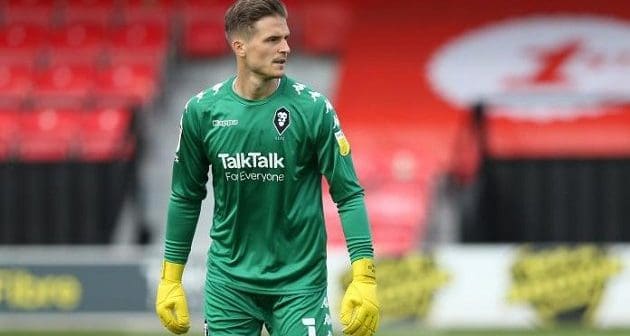Goalkeepers are a funny bunch – often unnoticed, often underappreciated, and often misunderstood. Goalkeeper Watch shines the spotlight – good, or bad – on the men between the sticks.
In the third article of Goalkeeper Watch, the EFL and Premier League fixtures between Friday 10th and Monday 14th December are under the spotlight.
Posts and crossbars are holy relics when a goalkeeper is beaten. They stand, like angels guarding heaven, in the way of the ball as last-ditch saviours of the defending team.
Sometimes, you’ll hear commentators speak of how lucky a goalkeeper or defender has got (or any player, for that matter) when they’re clearly beaten, but the divinity of the post or crossbar stands in the way of the ball.
But luck is a funny thing. Everything and everyone are lucky, every single day. In theory, one is lucky that their favourite cake at the local coffee shop is in stock – the delivery van could very easily have broken down that morning, but it didn’t.
In sport, the saying ‘you make your own luck’ is one of the go-to motivational phrases for coaches up and down the country. Yet, on occasion, it does seem to have an ounce of truth to it. And, that certainly was the case for Salford City’s Václav Hladký.
As we said in week two’s edition, a 0-0 is never a bad thing for a goalkeeper.
Hladký saw two Cheltenham Town shots (or one shot and one header, to be precise) rattle his goal’s framework on Saturday afternoon (December 12th). However, amid a generally solid performance, Hladký made one triple (we’re letting it fall into that category) one v one save in the first half that earnt him the privilege of watching two shots – where he was (beware the cliché) ‘well and truly beaten’ – stay out thanks to the crossbar.
One v ones are are one of the hardest technical parts of a goalkeepers game. This is because, perhaps more than anything, it’s a goalkeeper’s reading of the game and of a player’s signals that dictate (to a large extent) whether or not one makes a save.
There are three key aspects to a one v one save:
- Starting position in relation to the through ball. Ideally, the goalkeeper wants to be in a place where he or she can rush the attacker in case the do take a heavy touch and run through. However, they also need to be able to adequately retreat into the goal in case the defender covers and the attacker is forced into a longer-range shot. The Nick Pope save we analysed in Goalkeeper of the Week #4 is a good example of this.
- The decision to rush the attacker, or to hang back. Goalkeepers are taught to watch for trigger movements, such as a shift onto a stronger foot, a shift to go around the goalkeeper, the body opening up to shoot, or a heavy touch.
- The technical execution. Ideally, goalkeepers want to start tall in their set position, gradually getting lower ‘coming down the stairs’ with their hands open and to their sides, with bodyweight forward. The choice of save is a part of technical execution – does the goalkeeper spread, smother, or block?
Salford’s Hladký used primarily the spread save in his triple stop vs Cheltenham. Aside from the one v one saves themselves, his movement back into the goal and re-set to be in a position to make the second and subsequently third save was exemplary. Furthermore, Hladký utilised the positioning of his defenders well. He stayed higher for the second save as he was aware enough to know that his defenders were covering on the line.
The video below – from 1.30 – 1.42 – illustrates Hladký’s saves. He may not be a household name – and is the first goalkeeper outside of the top two divisions to take the ‘Goalkeeper of the Week’ trophy – but that’s not what it’s about. Goalkeeper of the Week champions one of, if not the best, goalkeeper in England’s top four tiers in a specific game week, and this week Hladký deserved recognition. Even with a little help from the posts.
Follow us on Twitter @ProstInt
![Prost International [PINT]](https://prostinternational.com/wp-content/uploads/2021/08/PINTtFontLogoRoboto1536x78.jpg)



